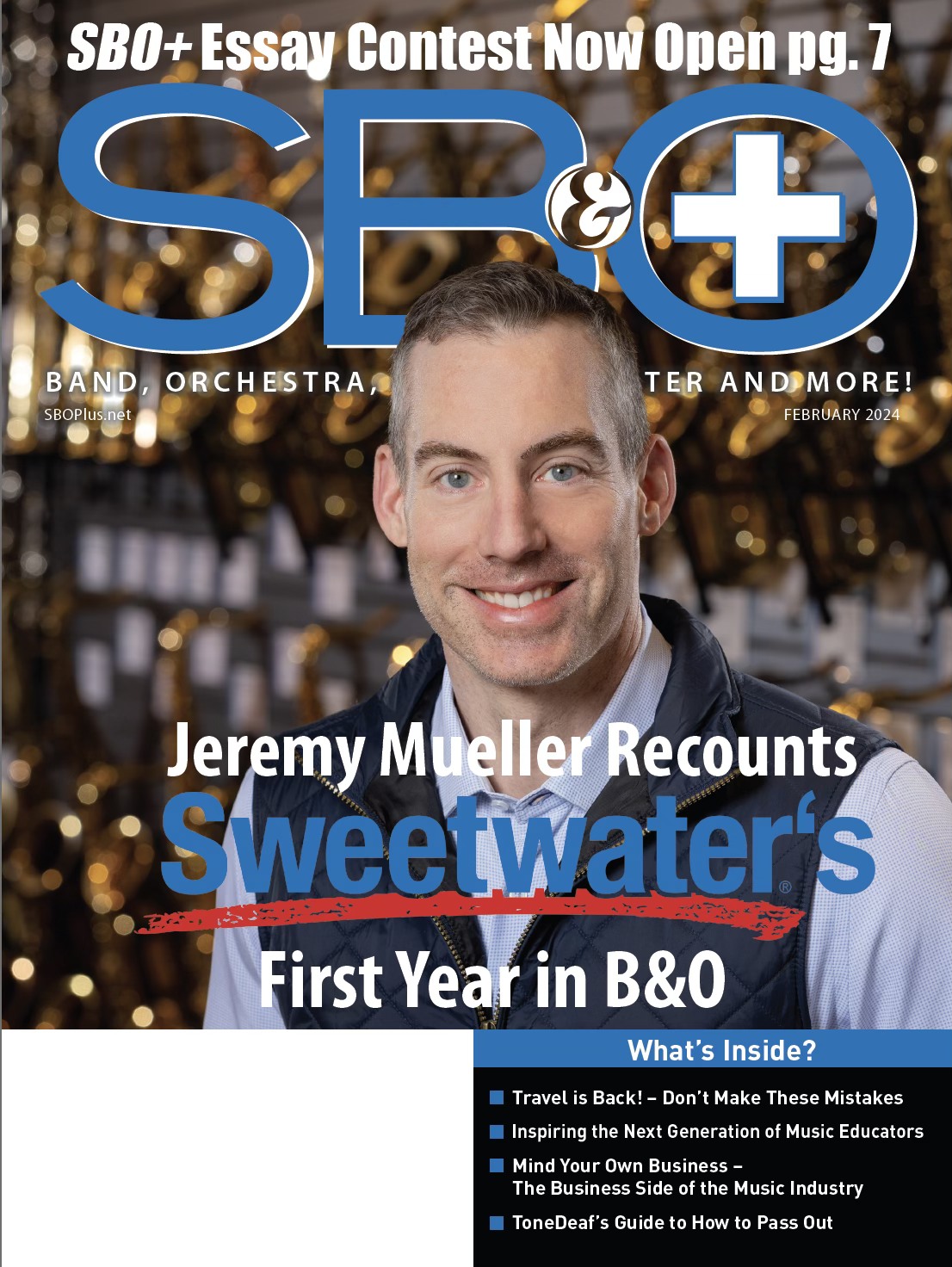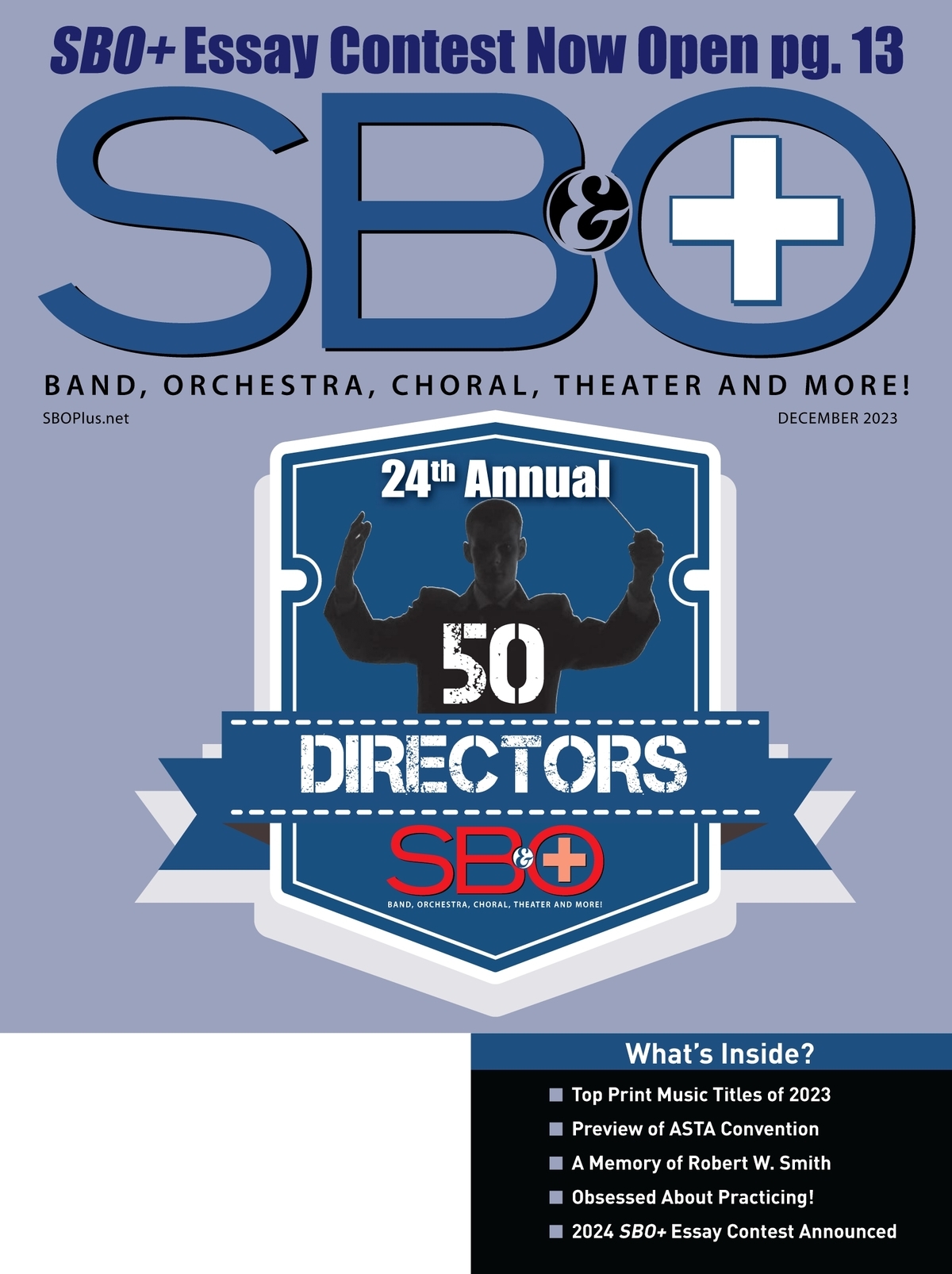EDUCATORS SUBSCRIBE FOR AS LOW AS $0.00! CLICK HERE!
SBO+: This is part 3 in a series of articles by faculty members of the NEC who share their tips on teaching deeper listening.
Jerry Leake, world percussion: Harmonic Time – Your Body as the Instrument
Over the years I have developed a body and language-based rhythm method called “Harmonic Time” that educates musicians of any age or background about world rhythm systems without having to play a complex traditional drum. Harmonic Time integrates a three-tiered orchestration of musical time, groove, and mathematics into the entire body, not just the intellect, allowing one to “feel” how parts combine. The method incorporates side-to-side stepping (with ankle bells), counter clapping/sticking patterns and spoken drum syllables and songs from Africa and India. This “language-based” model, drawing on aural/oral traditions, allows one to practice rhythm away from their instrument, strengthening short and long-term memory skills while developing coordination and independence. From young children to professional musicians, practitioners discover the power and depth of rhythm using a “theory meets practice” approach to composition, improvisation and, most importantly, education.
Dr. Hankus Netsky, Co-Chair CMA: NEC’s Contemporary Musical Arts Curriculum as a Template for Teaching Creative Musical Artistry
As a longtime teacher, I’ve developed a project-based aural skills curriculum that starts with detailed listening to the music of major creative musical artists. In doing so, I draw from the teachings of our founding chair, Ran Blake, who calls this practice developing “Long-Term Melodic Memory.” Over the years we’ve drawn our departmental repertoire from recordings by singers Billie Holiday and Abbey Lincoln, recordings of Bollywood pop and Greek protest songs, compositions by Stevie Wonder, George Russell and Dmitri Shostakovich, and from folk and popular performers of many diverse nationalities. When using such recordings as springboards the student will naturally want to consider the intention of the performer and/or composer. What emotions does the performer and/or composer seek to express in the piece? What are the characteristics of the performer’s gestural language? What story are they trying to convey? And most importantly, what are the specific and unique signifiers of the culture the music comes from? Whatever the answers to these questions, my goal in using classic recordings as texts has always been to push the student to realize expressive and creative melodic, harmonic and rhythmic invention is something a lot of cultures can agree is important – and that cannot be expressed effectively through notation.
After basic melodic work, students take on detailed listening projects that help them discover how composer/performer/ improvisers create their unique musical “dialects” using personal conceptions of sound, narratives from lyrics, harmonic progressions and strategic use of voice leading and register. Reference points in creative musical artistry are many and varied. Moreover, the goal of an emerging artist might be to follow a traditional form or invent a new one, work within an existing context (prayer, ritual, etc.) or create an imaginary landscape, use rules of a genre or modal system or purposely break them, articulate limitations or push boundaries.
I introduce harmony not as a series of common chord progressions taken from Western musical repertoire but as vertical structures that complement the tension and release of a melodic line. For the purpose of learning to hear and identify these structures, I place a pedal point on the top and work downward from there since, in my experience, harmony is usually heard in relation to a melody and not so much in relation to a figured bass, the approach still most used in teaching harmony. Confident the student has mastered melodic intervals while working on melodies (they’re another important component of the curriculum), I start this process by introducing harmonic intervals. Next, I introduce triads working downward through two harmonic intervals and then I add a bass note. By the end of a student’s second semester, they become fluent in recognizing and notating seventh chords of all types and, by the end of their third semester, they’re fluent in recognizing many different common and uncommon vertical sonorities containing up to six or seven pitches.
Along with their work on chord recognition, I expect all students to memorize actual pieces of music that use harmony, register and chord voicings in innovative ways and perform them on the piano. I draw these from the recorded repertoire of creative musical icons including pianist Jimmy Yancey, singer/pianist Nina Simone, pianist/composers Thelonious Monk and Duke Ellington and bassist/composer Charles Mingus. I give out no lead sheets or manuscript versions of pieces for students to study. Of course, our students are also required to demonstrate proficiency in transcription, something we incorporate into our curriculum at every level. If students can’t figure out a piece with larger harmonic structures, I give them easier pieces to figure out.
In the context of a conservatory education, it has often seemed to outsiders that our department is one of the most innovative programs out there but, from a more objective viewpoint, our program might be the most traditional one. Learning through oral tradition likely predates learning through notation by at least five-hundred thousand years(!). Empowering our students to learn the way great musicians of all traditions have learned from time immemorial is the greatest gift we music teachers can give them.
NECmusic.edu






